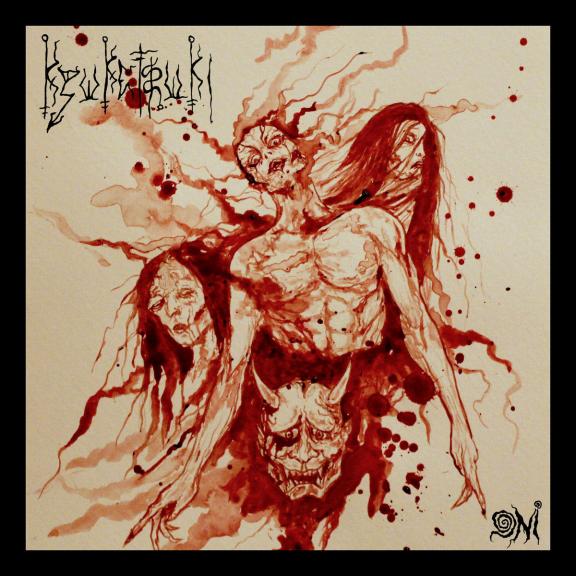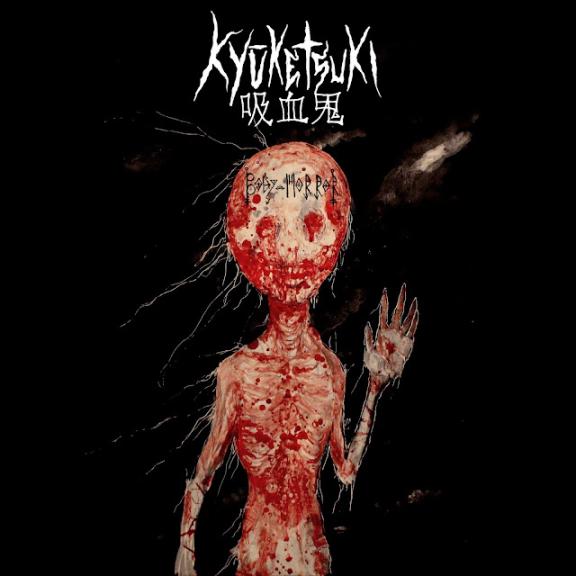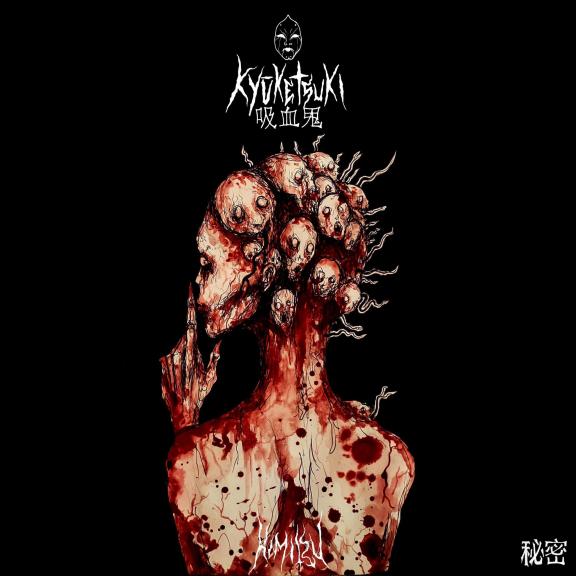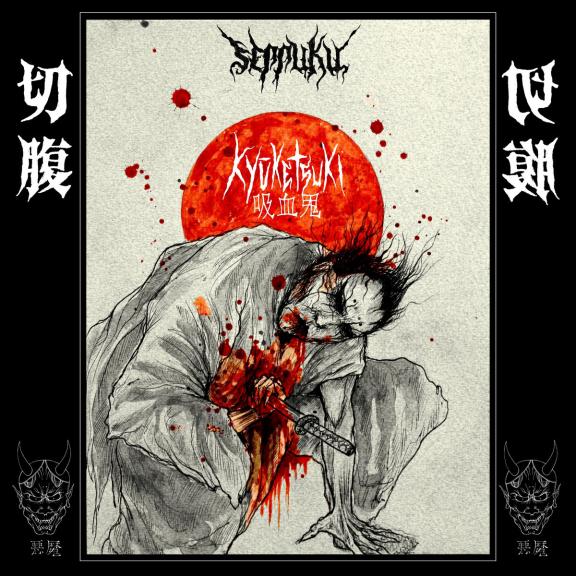Last month, Maxime Taccardi introduced us to Oni, another door opening onto the hell of Kyūketsuki, his black metal project inspired by the darkest Japanese folklore. While K.F.R illustrates the author's paintings with mournful lamentations, and Osculum Serpentis takes on more gothic traits, illustrating the vampiric myth with the right balance between horror and melancholy, Kyūketsuki stands out from the artist's other projects by drawing its inspiration from the Japanese spirit world, plucking from it multiple cultural references imbued with art, popular beliefs, or literature, at its most strange, spectral and infernal.
As always, the attention paid to the meticulously crafted packaging is noteworthy. The cover, painted in the artist's own blood, is not the only one to illustrate this collection, since each title also has its own illustration. Like its contents, the object is more substantial and even more meticulous than before. Oni, the album's 5th track, is enhanced by a video, which can be viewed below.
Every Kyūketsuki album is a sensory experience to be tamed. The various instruments used in addition to the classic guitars/bass/synths reinforce the feeling of disorientation: xylophone, taiko, flute... Far from being accessible, black metal here is equal to the worst of the human soul, all the way to the beyond, with no hooks or landmarks, bloody, rampant and dirty. Oni, a representation of everyone's malaise, of our personal and social hell, annihilates our perceptions from the very first listen. All boundaries are blurred, reality and imagination mingle, earth and hell become one.
If the sound is disorienting, the titles are equally evocative: Gemini is the title of a Shin'ya Tsukamoto film released in 1999 in which the main character has an evil twin disguised as a burlesque demon who wishes to usurp his identity for revenge. In Gō Nagai's famous manga Devil Man, the main character takes on the appearance of a demon to better protect humans, while Satan takes on human form to finally forget who he really is. The essence of all this vengeance has a blurred face, with no defined outline, coming to life in the midst of relentless violence. It is at one with Kyūketsuki's music, which seems to exist to illustrate the darkness of this world in which different hells are superimposed again and again.
The track Uzumaki perfectly illustrates this fatality, as does the work of Junji Ito, who in each of his stories depicts damned characters trying to escape their fatal fate, always in vain. Kyūketsuki succeeds masterfully in transcribing the dizzying unease of this spiral trap into music, illustrated by haunting notes which, in the repetition of an anguished movement, lock the nightmare into an endless loop. Tomie is another obvious reference to the author and his female character, who is as seductive as she is destructive. In this story, each suitor ends up killing Tomie in the most actrocious of ways, driven mad by this diabolical figure. This is one of the most accomplished chapters. Sumptuously embodied, the track's haunting, mystical chords oscillate between tormented choruses and Tomie's disquieting voice (borrowed from Ataru Oikawa's adaptation). Emptied of our essence, we become a pencilled puppet of the story evoked, a future damned victim.
Arubeki Jigoku (with its haunting strangeness) and Oni(rique), with its mournful tunes, bring the work to a grim conclusion. The last notes, more human and accessible, recreate a concrete link with our reality and close this nightmare with dark omens. Oni can be listened to like a trenchant hallucinatory dream, from which everyone can draw a part of themselves. There's no doubting the talent of the puppeteer who masters this universe, who chooses to direct his musical notes towards total darkness, finding in this a unique and personal beauty whose audacity continues to arouse admiration.







